
























This issue comes at a time when the world is in complete turbulence. COP27 has been a disappointing reflection of what happens when the loudest voices alone are heard. Hundreds of delegates from the world’s wealthiest countries and 600 oil lobbyists descended upon Egypt, to make decisions for the common good, but it was no surprise that little has actually been achieved. Still there was no strong and clear message about the phasing out of fossil fuels and the enhanced discussion around climate adaptation was as close as we will get to a publication of the belief that we will likely miss the 1.5° degree threshold of global warming. A begrudging agreement by the wealthiest countries to set up a loss and damage fund for those suffering the most from the effects of climate change was a step in the right direction, but the lack of clarity and firm commitment means we will undoubtedly be having the same conversations in COP28 and 29. None of this did anything to set one’s heart ablaze with motivation to act.
The energy crisis faced by so many in this country is a stark reminder of how our national reliance on a fossil fuel can, and without warning, cause catastrophic impacts on our lives. Many domestic customers are finding themselves torn between funding their fuel bills and putting food on the table. Many commercial customers are finding themselves torn between funding staff wages or being able to continue to operate. It is a time when the role of Energy Management and the professionals within the sector have never been so important. Our sector has the skills and abilities to make a difference. It should be recognised that through our actions of energy management and energy/carbon reduction projects we are able to make a difference to the energy consumed by buildings therefore reducing our reliance on fossil fuels and its inevitable fluctuations.
This issue should be a helpful reminder to all that we, as a sector, are playing our part in changing the world. It may not be as well reported on as the COP proceedings or hit news headlines as often as discussions on the national energy crisis, but our actions make a difference for the better.
I hope you enjoy this issue.
Gillian BrownThe EMA Magazine is published quarterly by the Energy Managers Association (EMA).
EDITORIAL
The Energy Managers Association www.theema.org.uk Tel: 0203 916 5516
CONTACT
Edita Krupova; Editorial Enquiries & EMA Membership Services Manager edita.krupova@theema.org.uk

CONTRIBUTORS:
Gillian Brown, George Munson, Chad Newton, Charles Sainsbury and Ben Burggraaf
The EMA would like to thank to the above contributors for their time and effort in providing the content and making this issue possible. Their willingness to share experience and knowledge is exemplary and inspiring, and we hope it will encourage others to come forward and contribute in the future.
The EMA Team Tel: 0203 916 5516 enquiries@theema.org.uk
The Energy Managers Association (EMA) was set up in February 2012 and represents Energy Managers across all industries. Our priority is to improve the position of energy management experts and their profession and act as their united voice. We aim to develop the skills, knowledge and experience of professionals through our training, high-quality peer to peer guidance and best practice exchange.
@2022 Energy Managers Association, Registered in England and Wales, Company No 7943728, VAT No 151339624, Registered Address: Suite 77, 95 Mortimer Street, London, W1W 7GB.
No part of this publication may be reproduced, stored in, or introduced into a retrieval system, or transmitted in any form or by any means (electronic, mechanical, photocopying, recording, or otherwise) without prior written permission. Any information or material sent by advertisers and contributors, including advice, opinions, drawings and photographs, is the view and the responsibility of those advertisers and contributors, and does not necessarily represent the view of the EMA.
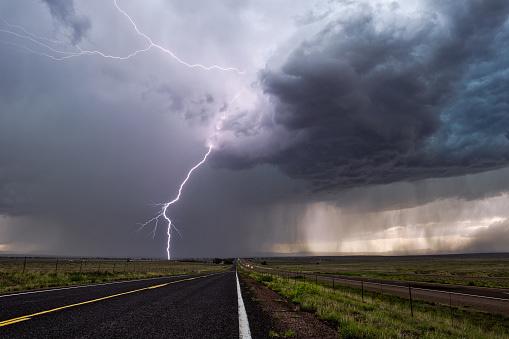
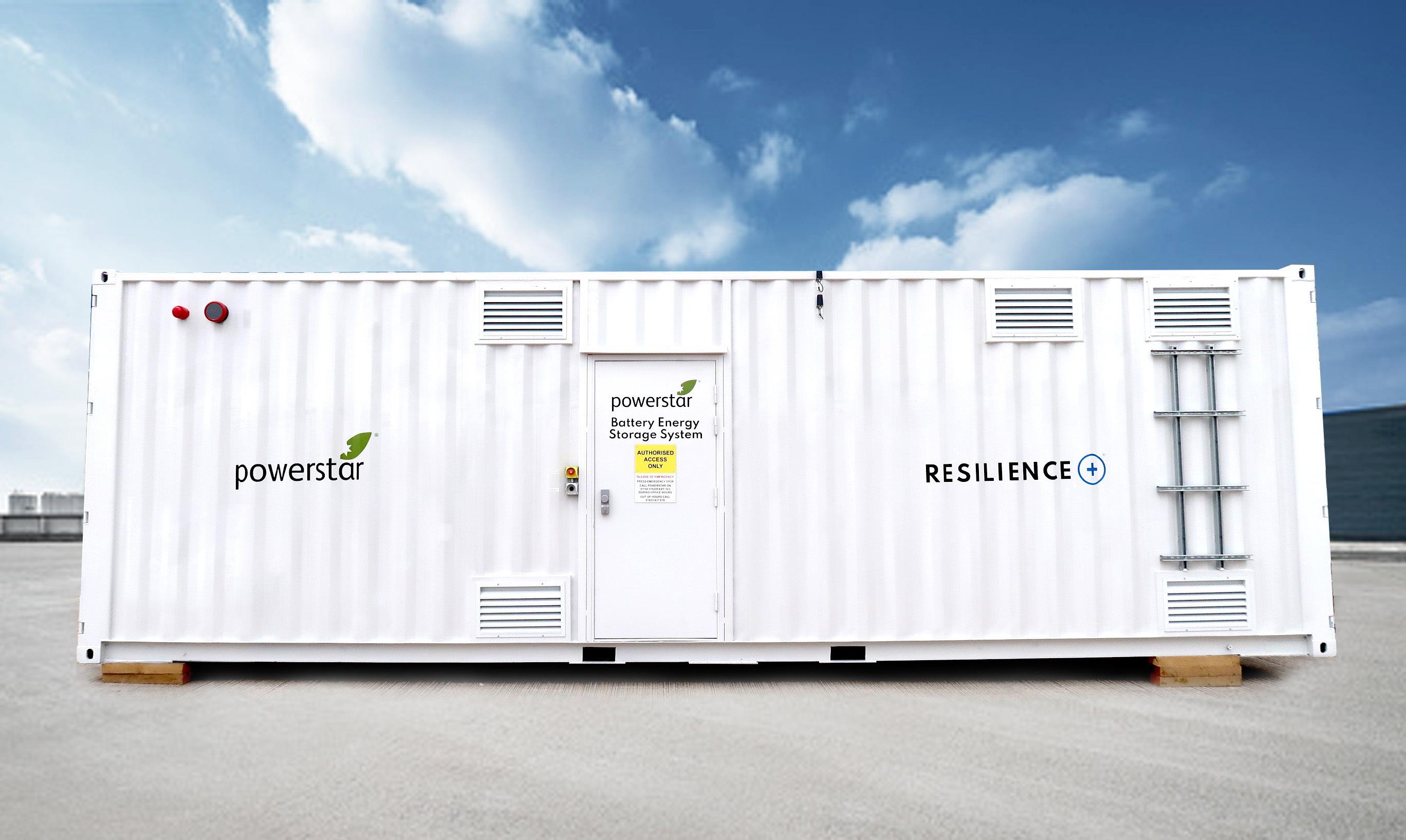









There has never been a more important time to ensure that the energy and carbon reduction projects we propose in our organisations see their way through to final completion. The current energy crisis makes projects both financially beneficial as well as creating the reduction in energy consumption which is key to how we navigate our way out of our reliance on fossil fuels. Yet still many of these obvious spend to save ideas are not pursued.
Historically, when building a project team to instigate an energy or carbon reduction project there were really only three key parties who had to agree; the finance representative, the procurement representative and the approving senior management team. With the money sourced and the correct procurement route identified, senior management sign off was almost a sure thing. Whether this was because organisations had more disposable finances, less questions were asked or organisations had enough of an understanding of the actual project, is unclear. Because of this, energy management professionals have been working for many years to reduce the energy consumption and relative carbon emissions of organisations. Many of the easy wins and easy to do projects have been tackled and now many of
the project works required in this energy transition are more complex.
These complex projects require a number of parties to be involved and a single missing link can be the reason that project work either stalls or does not start in the first place. What may seem like additional burden in sourcing project team members from across an organisation, is in many cases the way to ensure a balanced and collaborative approach is developed. This collaborative approach ensures that the project is a success both operationally but also delivers the savings or changes in energy expected.
When building a new project team, there are some key members which must be included. The finance teams, procurement teams and senior management teams all still reside within the new project team structure. In addition, there is now a requirement for other business areas to be included and consulted who were not previously considered as key stakeholders. The following groups are, from experience, missed in many project teams. Their lack of inclusion can not only delay project implementation but can reduce the project effectiveness and potential savings achievement once the project is completed.


A key group of people at times
not considered when planning an energy reduction project. In the most general sense, if people didn’t use buildings then buildings wouldn’t have a requirement for energy. The building user therefore becomes the linchpin to ensuring project success after the installation. What all projects should try to avoid is the building user fighting against the new installation, whether this be through lack of understanding of how the system works, historical processes or attitudes or nonacceptance of changes to working procedure. To help combat these challenges, building users should be brought in at the earliest possible stage. Bringing building users in early to a project allows the project team to understand the building and its occupants’ ways of working, building specific idiosyncrasies and any occupant specific issues which could be addressed as part of the project works. It is important that communication is two way and project leads should ensure that they put across to the building user why the project works are taking place, how it will affect them, if at all, and how to work with the new installation upon completion.
As we move into an era of district heating, communal heating and cooling solutions and renewable technologies which can be seen by or shared with others,
it is important to speak with the surrounding community and have them as close allies at strategic points throughout the project. Historically, it was only exceptionally large projects which considered engagement with the community, but more modern solutions such as large-scale district heating is a recurring example where more than one party has to work together to achieve project success. Whether a large or small project, it is important that communication with the surrounding community is carried out initially to understand the potential to develop or connect to such collaborative solutions. In these types of projects, scalability and future proofing will become more important, therefore getting initial communications right will inevitably pay off in the future. Community groups, surrounding business, domestic residences and central and local government are all key bodies who could be considered as key project team members with these types of projects.
The transition to a low carbon economy has come with a plethora of new technological solutions, but it would seem that the skill sets of technical operators has not kept pace with these new developments. It is important that the people who will operate the new carbon and energy reduction solution are brought into the project team early. Their contribution can not only highlight areas of conflict with current technology but it
allows members of the project team to consider any new training requirements for the operational team upon project completion. Ensuring these team members have the correct skills to create successful onward delivery after project completion will help ensure overall project success.
With new technological solutions comes a new wave of data sources so it is important to engage with the data and modelling team early. Many technological solutions installed for carbon and energy reduction now have either data movements within the solution itself or can provide data insights as part of output reporting. Although a relatively new concept to store and utilise these large data sets for better operational and management performance, it has become a quickly growing field in many organisations. Data connectivity, data labelling, data language and data visualisation are just some of the key items which need to be discussed with experts internally within the organisation. Getting these basics right at an early stage of the project can ensure a smooth transition after project completion.
When trying to install a new project it can be counterproductive if too many people are involved. Many organisations are large and have many department teams, some of which have no correlation to projects installed for carbon and energy reductions. Sending internal memos for each project can become a burden not only because of the additional administration but dealing with the opinions of those not involved can be labour intensive. But in many organisations, there are departments which would not naturally align with certain projects but can make significant contributions. There are great examples of teams external to
traditional project teams providing benefit such as bringing in space planners when undertaking projects which require building decant. But there are also departments which could play a smaller role. Communications teams for example may be able to develop succinct narrative for a complex project to allow dissemination of an idea to non-technical people or provide graphical expertise to develop visuals for those not familiar with particular spaces. Project planning teams which perhaps traditionally were only used on large scale projects could be brought in to assist with the development of timelines to keep projects on track. Soft FM teams can also play a key role in the adoption of new technological solutions as many projects can disturb internal and external spaces. Having members of the soft FM team as part of the project team ensures that they are aware of any additional workload which can be planned in advance to ensure that areas can be kept in working condition for the building users and eventually returned to a suitable state at project completion.
As we develop energy and carbon reduction projects both now, and in the future, the team we surround ourselves with will be one of the key factors in the ability of a project to succeed. For smaller projects we must walk a fine line between too many and not enough when it comes to the people involved in the project. It is not simply more is better as too many voices can lead to lengthy delays, can hamper innovation and can ultimately lead to a solution that becomes right for now and not right for the future. But it is important to ensure we have the right team skills to enable success and these skills may not be the ones that tradition dictates as we move forward. Each organisation is different and the best starting point is knowing the organisation and its people and then finding the solution that’s right for everyone.
“
Great things in business are never done by one person. They’re done by a team of people.
Steve Jobsby
Like most local authorities, Leeds City Council has declared a climate emergency in 2019 and committed to working towards becoming a carbon-neutral city. Key to this ambition will be the decarbonisation of heat, which in 2019 represented just under a quarter (23%) of UK carbon emissions. The council views its heat and energy related policies and projects as an opportunity to address its environmental challenges as well as supporting the one-in-six households in Leeds that were classed as living in fuel poverty in 2019. The Leeds PIPES district heating network is a great example of one of these projects.

The £49 million ‘Leeds PIPES’ network was imagined and developed with the aim of providing affordable, reliable, and low carbon heat and hot water to benefit both the council and commercial customers.
‘Affordable’ means that the network is designed to provide heat to connected commercial customers at competitive and attractive rates, whilst at the same time providing heat to connected social housing tenants at cheaper rates than alternative technologies, helping to alleviate fuel poverty. Being linked to an energy from waste facility means prices are less volatile than the global fossil fuel-based energy market.
‘Reliable’ means that the network provides a consistent service that customers can rely on, with multiple
layers of resilience designed in to ensure continuity of supply.
‘Low carbon’ means that heat from the network is significantly less carbon intensive than electricity from the grid or other traditional methods of heating building, namely gas or oil. The scheme currently uses energy recovered from the city’s nonrecyclable household waste at the Leeds Recycling and Energy Recovery Facility (RERF). There are around 360,000 homes in the city and most of these have their waste collected by Leeds City Council and taken to the RERF. With the average household in Leeds producing enough waste each year to recover around 1.3 megawatt-hours of heat, the RERF has significant heat generation capacity. This potential use of the facility for heat supply was considered at the earliest stages of developing the site and informed the council’s approach

to procuring a long-term operator.
Theoretically, once any network of insulated underground pipes is in place then it could be retrofitted so that any heat source—or combination of heat sources—could be used to power the network. Despite not technically being powered using a ‘renewable’ resource, the Leeds PIPES project helps cut the city’s carbon footprint in multiple significant ways.
First, recovering energy from waste releases fewer (and less potent) greenhouse gas emissions than waste sent to landfill. Second, the energy that is recovered from waste can be converted into either electricity or (more efficiently) heat as a byproduct which reduces the burning of fossil fuels. Typically, the RERF produces 5-7+ units of heat for each unit of electricity sacrificed, which is significantly better than any heat pump on the market. Third, heating
a building by connecting it to a district heating network typically replaces or makes redundant less sustainable heating methods such as gas combustion systems. The Leeds PIPES network supports the council’s long-term ambition of the district becoming the first net zero major city in the country.
When the council first began consulting prospective customers about connecting to the network, a clear message came back that customers would only seriously negotiate once construction had started, and ideally with the network already operational. However, without a firm idea of potential customers, the risks of beginning construction were high. In response to this concern the council took a calculated risk, underpinned by ‘anchor’ connections to its own social housing and public sector partners, to commence construction on the assumption that new customers would connect once district heating infrastructure was available.
This assumption is now being realised but is a real barrier to many large strategic networks ever commencing. It was made possible in Leeds in part due to successful engagement with regional, national, and European bodies to secure a combination of grants and use of our own lowinterest borrowing capability. Leeds PIPES continues to expand and is regularly connecting to new buildings with the expectation of becoming one of the UK’s largest heat networks in the near future.
Around 1,800 residential properties, 8 public buildings, and 2 commercial buildings are currently connected to the network. Several more customers (including the Ministry of Justice and
a second major connection to the Leeds Teaching Hospitals Trust) have recently announced plans to connect and discussions are progressing well with many potential customers.
Stakeholder engagement was also important for minimising disruption. The project team worked with highways officers to coordinate pipe-laying and planned roadworks to minimise the duration of road closures and their associated impacts. Similarly, as domestic connections involved work in people’s homes, close liaison with council housing team helped reduce the number of
new connection helps to raise the profile of the network in the city, attracting potential customers and reaffirming the viability of district heating connections.
Resilience was considered at an early stage. A new energy centre was created to take low energy steam from the RERF and convert it into low-temperature hot water for the district heating network. A second energy centre at Saxton Gardens was created to meet peak demand and add resilience to the overall system using gas boilers, ensuring continuity of supply in all circumstances. Our approach to resilience has meant that there has never been a loss of heat to customers at any point. Whenever the RERF has had outages, the backup boilers at Saxton Gardens have automatically fired to ensure uninterrupted service is provided to customers.
The project has received funding from a number of regional, national and European sources:
visits and therefore disruption for both tenants and installers.
Leeds PIPES began construction in 2018 and was constructed in three phases, some of which were constructed in parallel. Phase 1 was completed during 2019, phase 2 in 2020, and construction on phase 3 has now commenced.

Phases 1 and 2 of the network were designed to facilitate connections for public sector organisations and council buildings. Once phase 3 is installed and operational, we expect new customers to primarily be new developments, with a mix of residential, student accommodation and non-domestic customers. Every
• £5.8m from the European Regional Development Fund to help connect 1,080 council homes to the network.
• £5.5m from the Heat Network Investment Project, managed by the Department for Business, Energy and Industrial Strategy (two separate grants for phase 2 and 3).
• £4m from West Yorkshire Combined Authority and Leeds City Region Enterprise Partnership (LEP) through the Leeds City Region Growth Deal.
• £0.1m from the LEP Energy Accelerator programme, funded by the Leeds City Region Growth Deal and the European Investment Bank’s European Local Energy Assistance (ELENA) programme.
The business case for the Leeds PIPES network was approved on the basis that the council would attract additional customers to the network once the infrastructure had been installed and the benefits of connecting had been demonstrated. The council will continue to add commercial connections to the network over the next phase of works.
Unlike privately owned networks, the council isn’t driven to make a profit from the network, deliberately setting tariffs to be competitive with fossil fuelled alternatives to tackle fuel poverty and improve business competitiveness. Any surpluses generated are used to reduce debt, reinvest in expanding the network to serve even more of the city and, longer-term, to invest in additional low carbon heating sources.
Leeds PIPES is now a well-established low carbon heat utility, with a rapidly growing customer base and several extensions under construction during 2022/23. It has collected four awards this year, demonstrating both innovation and a focus on meeting customers’ needs. By replacing thousands of polluting, inefficient fossil fuel powered heating systems with a more sustainable alternative the network is helping to cut Leeds’ carbon footprint and also improve local air quality. The network now stretches around 26 kilometres in length and work is currently underway to extend it another 2.5 kilometres to enable more buildings to connect.
Over the last financial year, more than 15,000 megawatt-hours of heating was provided by Leeds PIPES which helped reduce the city’s carbon footprint by more than 2,000 tonnes. The more buildings that connect and take heat from the network, the greater the positive environmental impact and phase three of the main
spine extension is currently underway, increasing the connection capacity. It is estimated that the scheme has the capacity to save more than 16,000 tonnes of carbon from being emitted every year once fully built out.
Unlike the use of electric storage heating or heat pumps, buildings connecting to the network also help to reduce demand on the city’s electricity grid, freeing up capacity as we transition to an increasingly electrified transport and heating system. Alongside environmental benefits, the network is currently providing around 1,800 homes with affordable warmth, supporting efforts to alleviate fuel poverty in some areas of the city experiencing high levels of deprivation.
The network’s commercial customers are benefiting from competitive and predictable pricing of heat, supporting local economic growth. External factors, particularly the gas price volatility and institutional investors’ focus on carbon, mean that Leeds PIPES now has an even more compelling commercial offer. Finally, the project has helped employ more than 430 people in the local low carbon sector including 36 apprentices.
In addition to constructing the third phase of the network and connecting new customers, work is already underway to prepare the Leeds PIPES network for future policy and regulatory changes. The government has committed to introducing ‘Heat Network Zoning’ policies by 2025. These zones will operate by designating areas within cities where buildings (and potentially heat sources) are mandated to connect to networks, unless exempt, enabling the expansion of networks where they are recognised to be the lowest cost way of decarbonising heat.
It is expected that local authorities will
have responsibility for coordinating Heat Network Zones and determining how they will operate. Leeds is well placed for the policy’s introduction after voluntarily participating in two government sponsored pilots. The council expects the introduction of zoning to increase heat network take up exponentially by removing the biggest barrier to initial establishment and strategic growth: uncertainty. The government has also announced that Ofgem will become a future regulator of heat networks with responsibilities including setting and enforcing regulatory requirements relating to the provision of information, pricing, technical standards, and quality of service standards to protect domestic and microbusiness consumers.
Heat networks are currently unregulated, with voluntary codes of practice and standards used by the better networks, but no obligation to use these for privately funded networks. As a result, there is significant variation in the customer service standards provided to customers and in the cost of heat. This variation is detrimental to public and stakeholder trust in district heating which inhibits growth, so the council is supportive of regulation.
Although the full details of the regulation are yet to be announced, it is widely anticipated that the good practice required by BEIS district heating grant funds will be used as the basis of the quality standards. Leeds PIPES has been built in compliance with the Chartered Institution of Building Services Engineers (CIBSE) Code of Practice (a technical standard), has recently adopted the Heat Networks Investment Project (HNIP) developed legal documents, and has been developed to meet the requirements of the Heat Trust (a customer service standard). The network is in the process of formally joining the Heat Trust to improve its readiness for the incoming regulation even further.



West Dunbartonshire Council (WDC) have an ambition to shape the future, with three core objectives. Firstly, they want to lower energy bills for domestic and non-domestic buildings, including reducing heating fuel costs for existing and new residents –contributing towards the alleviation of Fuel Poverty. Secondly, they want to reduce carbon emissions using innovative technologies and finally to increase the security of energy supply.

A major step forward in these ambitions is the introduction of the Queens Quay District Heating project. Queens Quay is an area in the town of Clydebank. Historically used as a ship building location, the ground has lain derelict since the closure of John Browns ship yard during the 1970s. The redevelopment of the entire site features a ground-breaking project of Scotland’s largest Water Source Heat Pump (WSHP) installation to date, taking water from the nearby River Clyde at between 6 and 12 degrees centigrade and using it to generate heat which is distributed to customers through an underground district heating pipe network. To oversee the strategic development of the district heating network the Council established a wholly public owned energy company, West Dunbartonshire Energy LLP.
The ambitious £20million project, was supported with £6.1m funding from the Low Carbon Infrastructure Transition Programme (LCITP)
and was completed in December 2020. The main heat supply pipes have been laid across the entire length of the Queens Quay site and have been designed with future extension in mind. The initial phase provides heat to Council offices at Aurora House, the Titan Enterprise Centre, Clydebank Leisure Centre and the new care home at the site, Queens Quay House. Points of connection for additional phases are also in place ready to supply a new NHS Health Centre, over 140 flats with ancillary retail units, as well as Clydebank Library and Clydebank Town Hall. Future connection of West College Clydebank campus and other commercial uses to be delivered are under active consideration.
The introduction of the network makes a major contribution towards West Dunbartonshire Council’s climate change targets of net zero by 2045. Residents of more than 1,000 proposed new homes due to be built on the site will be able to enjoy reliable low carbon heating as the district heat network provides an alternative to individual gas boilers at a similar or lower cost. The low carbon system has also been designed to enable future expansion beyond Queens Quay, with scope to heat the Golden Jubilee Hospital some two miles away. Savings are already predicted to be the equivalent to the total carbon footprint of 1,240 local homes using fossil fuels as a primary source of domestic heating. In addition to these savings it has the added benefit of providing clean, inexpensive energy to
residents as well as providing a comfortable place to live and enhancing the health and wellbeing of the local residents. Based on heating demand estimates and with a focus on encouraging expansion within the network, it could be able to deliver a cumulative reduction of at least 130,000 tonnes of CO 2 by 2040.
To design the system there had to be a mixture of actual data and modelled data as much of the site was either yet to be finished or still to have plans approved. Historical heating data was reviewed to provide WDC with accurate profiles for the new build and in-design sections of the land development. For the existing buildings, gas consumption data was utilised and modelled for future energy needs. The analysis showed that while peak demand would reach approximately 20 Megawatt Thermal (MWth), this load would typically only be required for 25 hours per year. This analysis provided a clear picture of current and future heat requirements and therefore ensured the right decisions were made in relation to the size of the heat pumps. It was however clear that a large amount of preliminary work would be required for the existing building stock if this was to work efficiently with a new heating source. The older buildings on the proposed network were designed for historic heating systems favouring a higher 82°C flow and 71°C degree return, which differ from the new builds, typically based around a 75°C flow and 45°C
return or in some cases lower. To allow the older buildings to operate with lower flow and return temperatures provided by a WSPH, WDC carried out a retrofit of the heating systems by modifying the heating controls and radiators. This enabled a sitewide uniform flow and return temperature, giving the heat pumps a higher coefficient of performance and making the overall system more efficient. Over time with fabric improvements, it may be possible to achieve improved network efficiency by further reducing flow and return water temperatures.
With this work completed, the system could be designed as two 2.65 Megawatt (MW) WSHPs which are intended to run as close to maximum output as possible to optimise efficiency, while in turn delivering most of the annual heat demand. This configuration means that in the summer months, when demand is low, one heat pump can be taken offline at any given time to perform scheduled maintenance, with the other still providing heat. The scheme also has added resilience of two gas boilers installed within the energy centre which, when used, can deliver an additional 15 Megawatt (MW) to meet peak demand. These boilers are only expected to be used during peak demand times or as a backup option. The heat pump process uses ammonia as a refrigerant, therefore an emergency ventilation scheme had to be developed to ensure it met relevant legislation as well as safeguarding anyone in the energy centre or further afield. An internal enclosure which also provides acoustic attenuation was installed to house the heat pumps and associated plant. This is vented via the 30m flue together with flues for the gas boilers. The chimney design was informed by a flue
dispersion model which considered the future surrounding residential developments.
WSHPs rely on electricity but have a high coefficient of performance. This means for every MW of electricity used, the heat pumps produce approximately 3MW of heat. One of the biggest challenges faced during the development of the project was designing a system which would maximise the use of the WSHPs and use off-peak decarbonised grid electricity as a primary energy source to ensure maximum carbon emissions reductions. This was made possible in part by utilising a 120,000 litre thermal store which allows the system to optimise off-peak energy supplies and the relatively slow heat pump reaction times to deliver a constant supply of heat to meet fluctuations in demand.

While the system is already effective at reducing carbon emissions, it will become even more environmentally friendly as the electricity grid continues to decarbonise in the future. Because of the increase of renewable electricity generation contributing to the grid, it is expected that the grid carbon factor should decrease by over 87% between the years 2018 and 2044, with the heat pumps carbon emissions decreasing by a similar
amount over that period.
WDC made a firm commitment that the system would not damage the river’s ecology, and a comprehensive study was undertaken to ensure consideration of key factors including water temperature, wildlife, eco structure and average flow rate. As well as preserving the river’s ecology, the average flow rate was important in determining the distance between where water is taken from for the WSHP supply and where the water is returned, the WSHP return. This was to ensure the system did not collect cooler water which had already been through the system. The abstraction system feeds the heat pumps with 125 litres of water per second each and so ensuring that accuracy of design calculations and providing an effective filtration system were extremely important.
The Energy Centre is designed to include future phases and planned expansion, creating an easily expandable district heating network. Extra capacity has been catered for with space inside for a third and fourth heat pump, and an additional thermal store, to be installed as required. To achieve net zero aspirations, the natural gas boilers will be replaced in due course with suitable low-carbon alternatives.
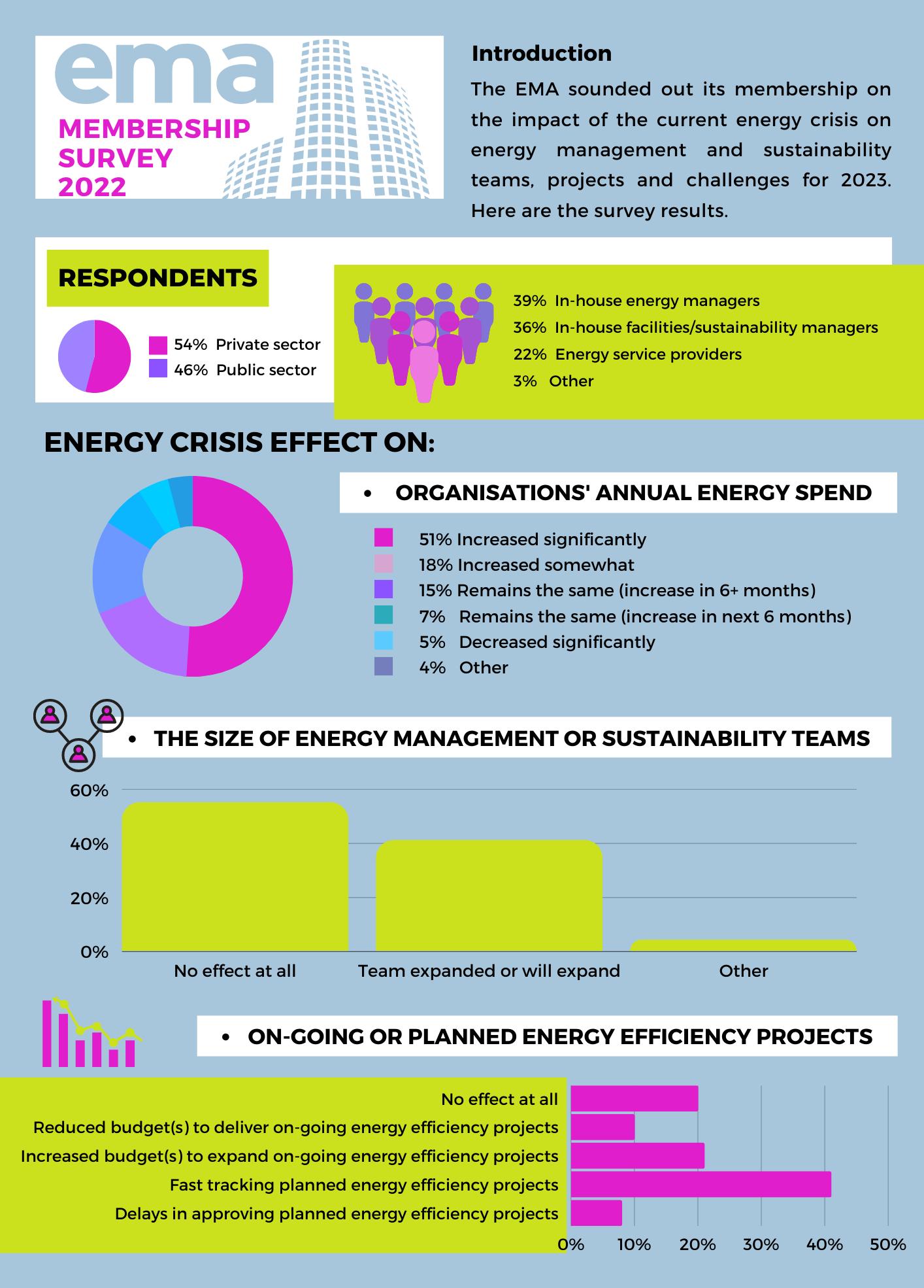
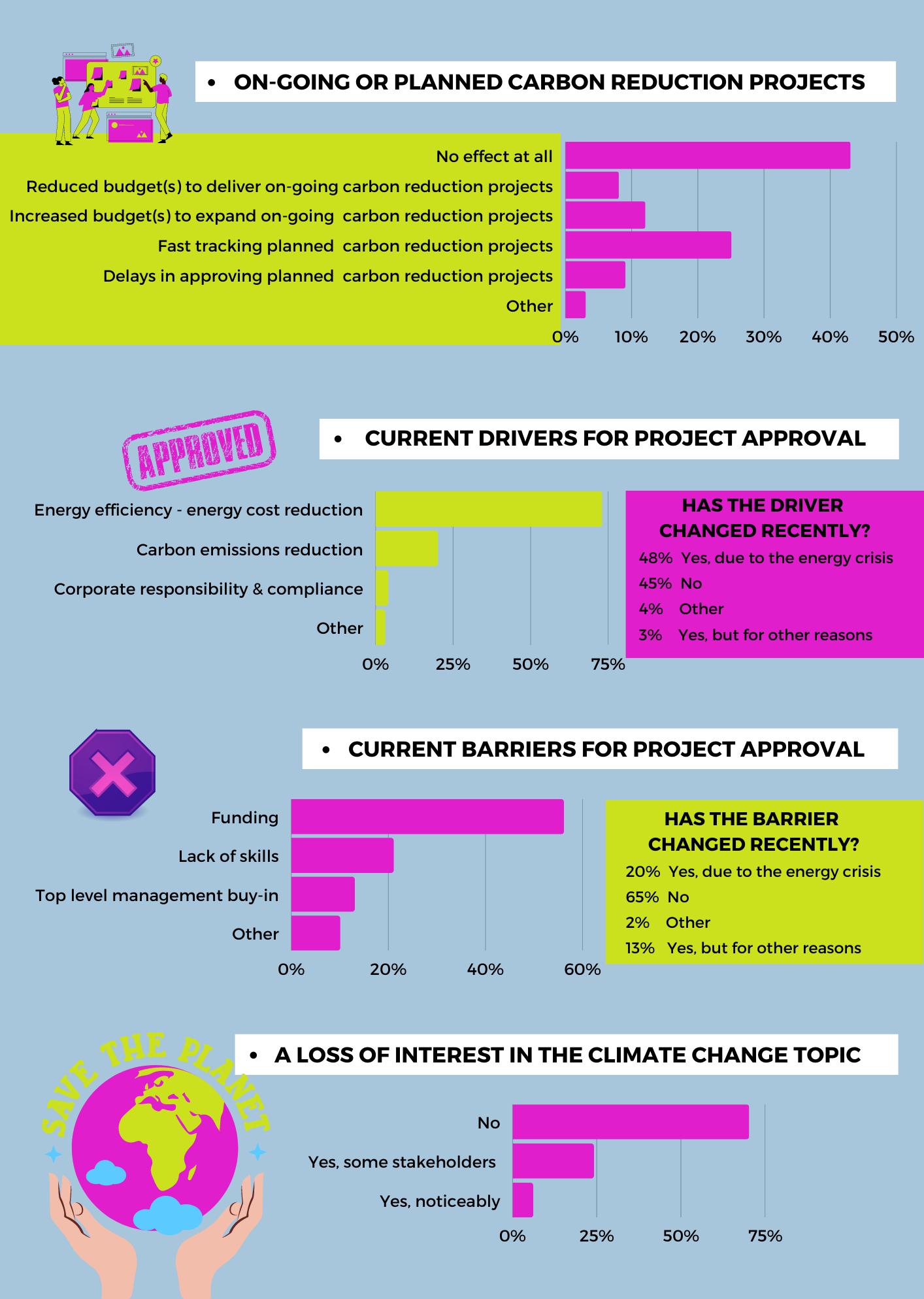
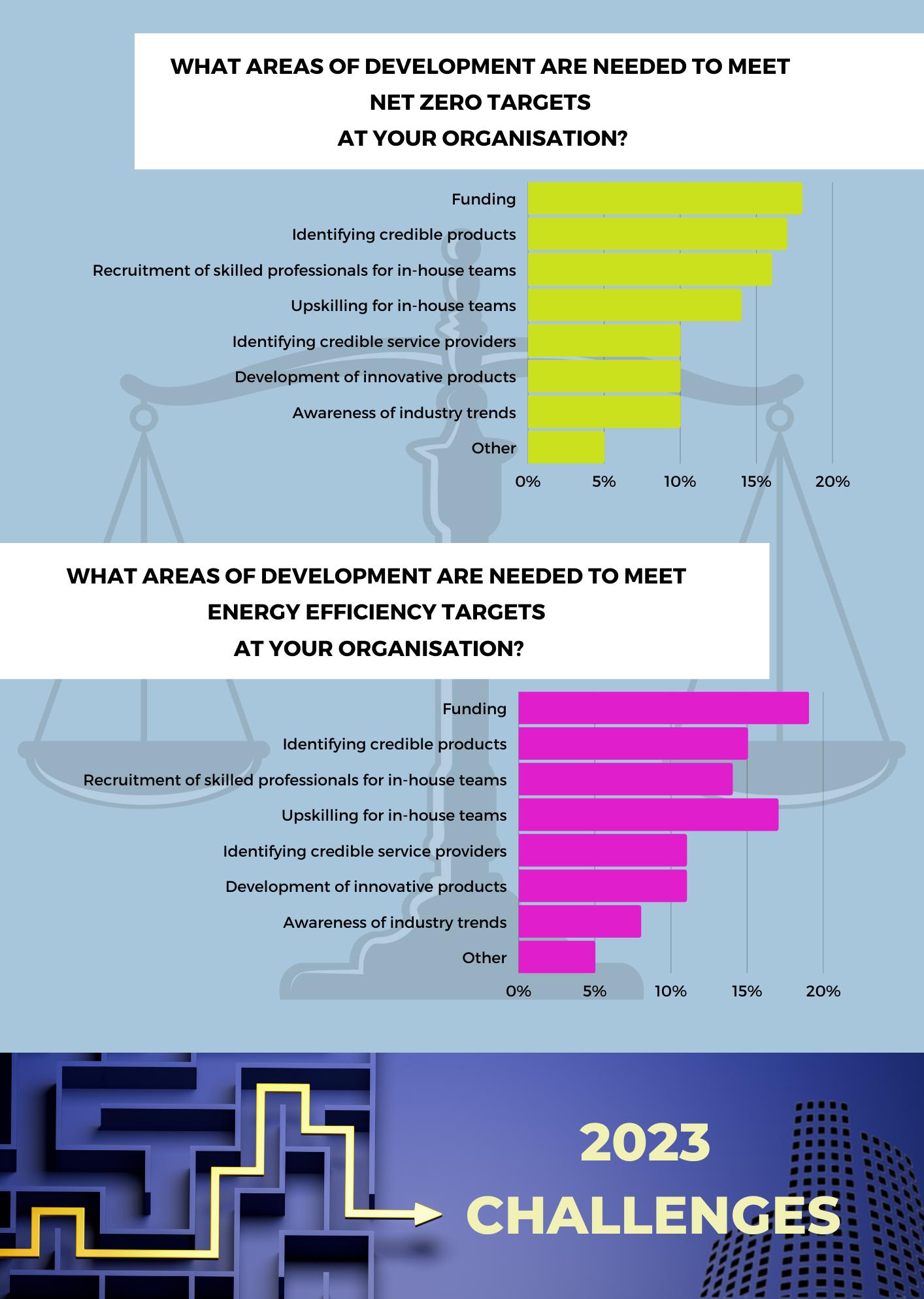

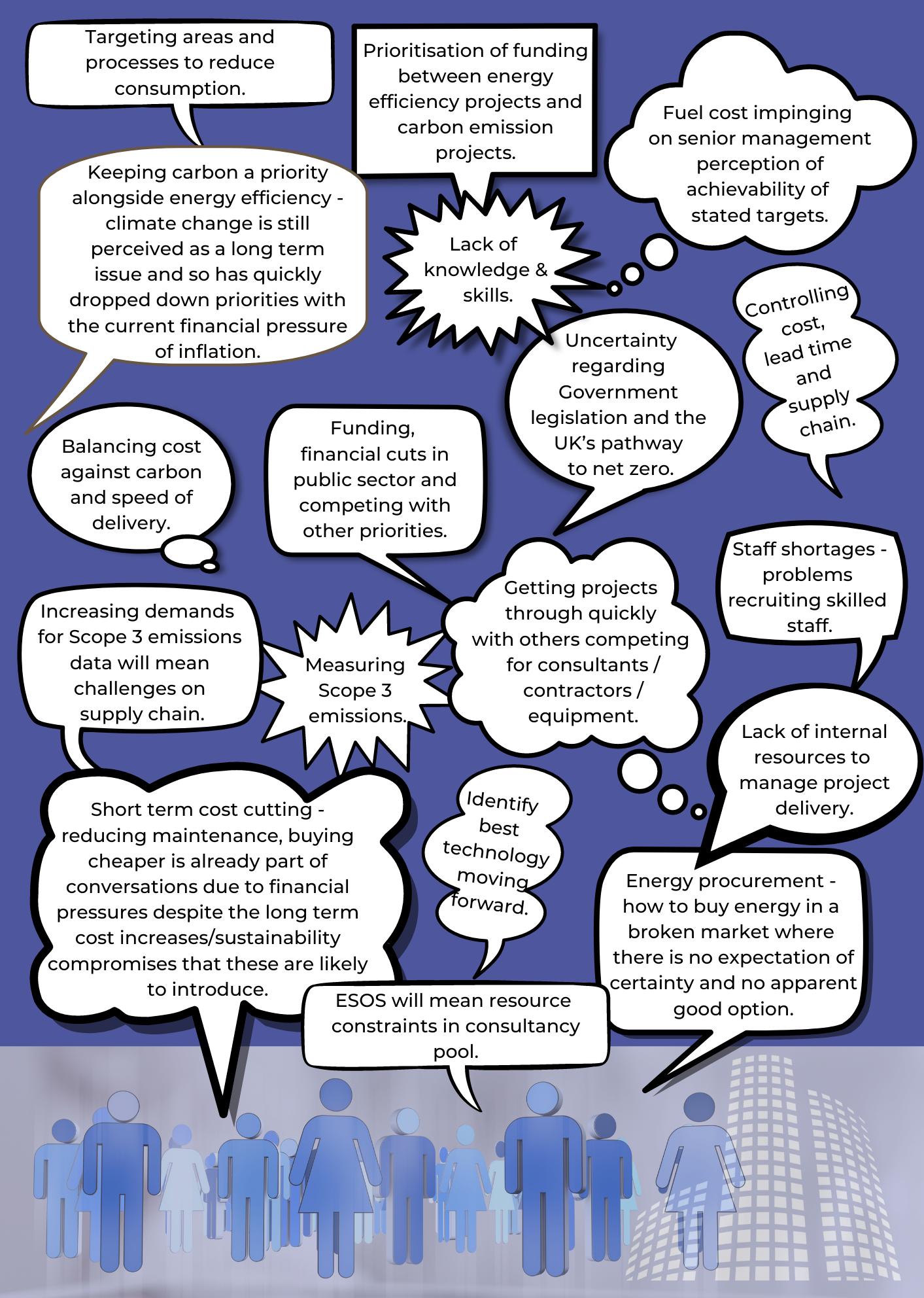



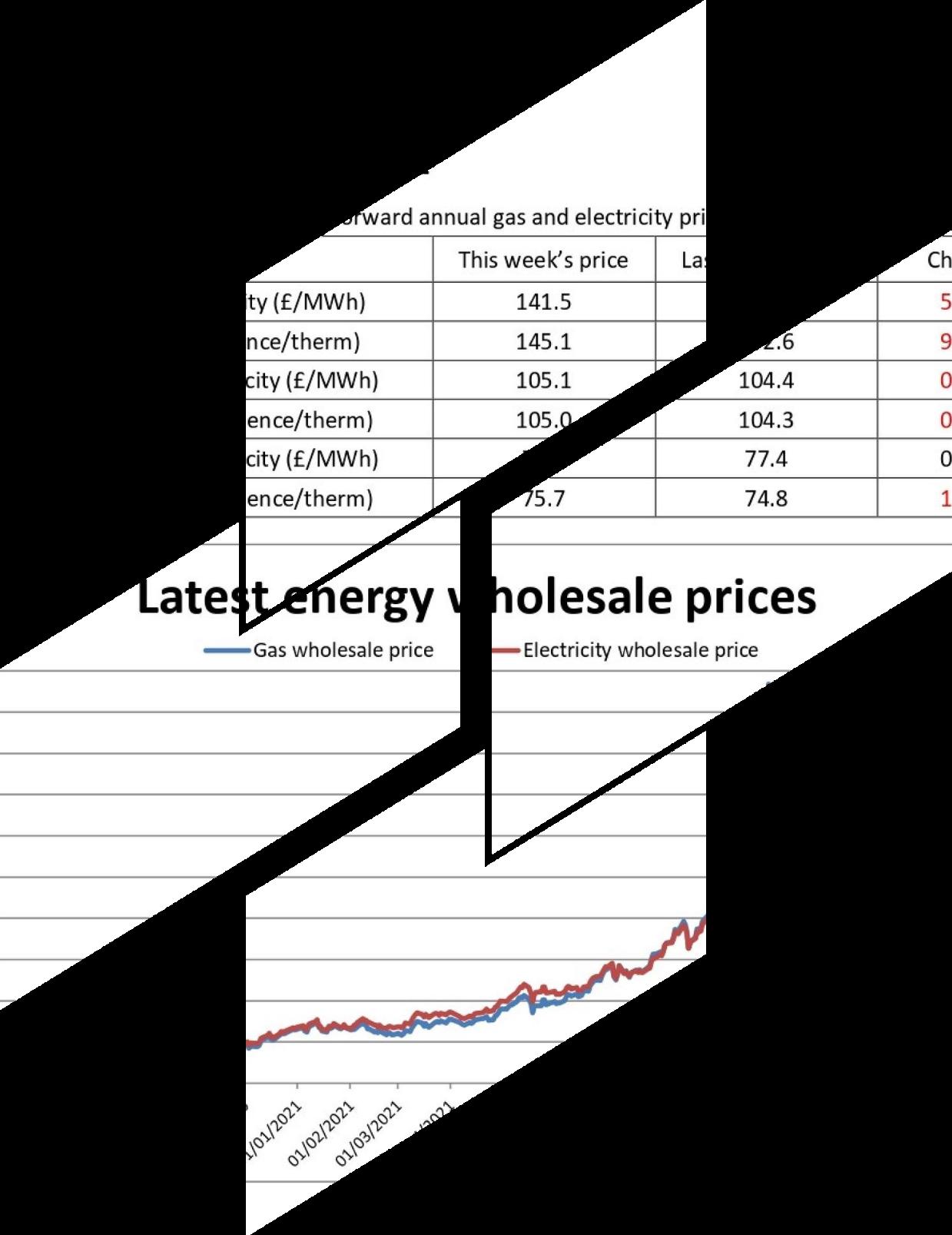









Located in the far South West of England, The Eden Project in Cornwall is an iconic example of regeneration and nature recovery, which aims to build relationships between people and planet to demonstrate the power of working together for the benefit of all living things. Now more than 21 years old, the popular attraction is a living theatre of plants and people that welcomes almost 1m visitors a year to explore its mission through education, plants and nature, arts and culture, regenerative sustainability and communities.
Having generated £2.2 billion in economic impact, the organisation is now using its success to expand its mission to new audiences with further sites planned both in the UK and abroad.
Being home to more than 300 fulltime employees, our demonstrator site is proof that positive transformation is possible and that by working with nature, rather than against it, we can achieve great
things. The site recovers two-thirds of its water demand for irrigation and toilet flushing from ground and rainwater sources, and is in the middle of delivering a groundbreaking deep geothermal energy plant that will provide a plenteous source of on-site renewable heat to be delivered directly to its Rainforest and Mediterranean Biomes.
The site’s energy demand is managed with a highly specialised Building Management System and the organisation promotes a culture of energy and sustainability awareness through its teams and working practices.
Following 10 consecutive years of certification with Planet Mark and achieving consistent reductions in operational carbon, in 2021 we reaffirmed our response to planetary emergency by setting the ambitious commitment of becoming a climate positive organisation by 2030 as part of the United Nations Race to Zero
campaign. The level of our ambition in our pathway seeks to not only rapidly reduce all emissions across scopes 1, 2 and 3 but crucially, go beyond net zero to a point where we store away more carbon than we emit.
Our approach is centred around nature recovery – we see the biodiversity and climate crises as being part of the same wider problem rather than separate issues. Ultimately our approach to going beyond net zero seeks to demonstrate the possible to our audiences and inspire them to make changes in their own lives.

Having calculated our extended scope 3 emissions footprint through a detailed study with Planet Mark (these account for 75 per cent of total emissions), it was clear that tackling emissions from visitor travel would be a key area of focus in delivering our decarbonisation pathway. Despite being served by a regular bus route with onwards connections to St Austell railway station, the rural location of our site
makes for challenging use of public transport (which was especially highlighted during the coronavirus pandemic) and means 95 per cent of our visitors arrive by private car. Despite these challenges, the scale of the opportunity to develop our site into a regional sustainable transport hub that supports rapidly increased demand for electric ve hicles (EV) and public transport is significant.
To seize the opportunity, we rapidly needed to increase our on-site capacity for EV charging and upgrade the electrical infrastructure needed to support a new EV charging service. As a destination location, our use case for EV charging is somewhat atypical compared with a convenience location and needed to satisfy a number of different users. As well as improved charging facilities for visitors, creating an incentive for greater take up of staff personal vehicles (we offer a salary sacrifice scheme via Octopus EV) was important. Whilst expensive, investing in our site’s electrical infrastructure would also create opportunities for additional revenue streams as well as facilitate future connections to energy generation sources (such as solar canopies) and battery storage. Finally, introducing better
charging facilities for our fleet of electric vehicles would also support improved logistics across site with a lower environmental impact from operations.
Transforming our infrastructure
Arguably the largest hurdle to delivering the EV charging hub was completing the required infrastructure upgrades. An indepth electrical study concluded that to meet future demands for electrification of transport and heat as part of the site masterplan, an increase in grid capacity of 2 Megavolt-amperes (MVA) could be needed within five years’ time.
Following an initial request for an additional grid connection with Western Power Distribution, it quickly became apparent that relying on further reinforced grid import connections would quickly become insufficient. In fact, by engaging with the distribution network operator (DNO) early on, we were able to settle on a suitable network design quickly which, rather than relying on an external grid connection, would be predicated on developing our own private high voltage (HV) network in order to support our goal of achieving energy autonomy in the future. Delivering the EV hub was therefore phase one of expanding our private HV network, with the intention that it would incorporate
further strategic power hubs over time as demand requires.
Following an eight-week design and due diligence exercise, we completed the installation of a new 1 MVA substation within 12 weeks which now provides power to 10 x 22kw dual alternating current (AC) dwell time appropriate chargers spread across 20 dedicated, wellspaced EV charging bays.
From our market evaluation, it quickly became clear that there was no ‘one size fits all’ approach when contracting for an EV charging service. In fact, the reality emerged to be far from it! In a rapidly expanding market with regular new entrants, for us, it came down to a trade-off between being able to retain operational control of our hub versus the level of capital investment we could stretch to. The three options we considered were broadly as described in the table below. In the end, we settled on option 3 – a hybrid option that allowed us to contract for a fully subcontracted operational and maintenance service but still retain control of rights and revenue for the hub. It also didn’t require us to resource operations and maintenance support ourselves –we had to be realistic about our level of expertise in the EV market!

•
Although the EV as a service model results in ongoing service and maintenance fees, these are largely offset by the revenue generated from the charging tariff payments.
Crucially, our chosen approach keeps our options open for future service development in what is a rapidly evolving market.
The EV hub went live in early August 2022, just in time for peak season, and was immediately welcomed by our visitors, delivering 26 charging sessions on the first day and receiving positive feedback on Zap Map since. Our highlights from August and September 2022 data include:

• Charging sessions delivered – 652
• Energy delivered – 15,704 kWh
• Avg. charge time – 3.5 hours
• Avg. energy per charge – 25 kWh
• Emissions avoided 1.3 t/CO2e
We are still learning as we go, refining and evolving our EV service as required, but some of the key lessons we have learnt so far are as follows:
• Signage and pre-visitor comms
– keep it simple and clear – we want our visitors to enjoy a stress-free stay with us.
– think carefully about the behaviours you want to encourage and be prepared to adapt and change your approach when needed.
• Consider user policies for staff
– we implemented a short policy to ensure fair and responsible use of charging facilities for all staff and fleet users, again making the sort of behaviour we want to encourage clear from the start.

• Keep improving user
experience – we are still listening, reviewing and adapting!
• Technical design
– don’t underestimate the practical considerations – an EV hub without sufficient spacing between bays is unlikely to meet accessibility requirements and might not be suitable from a fire and health and safety perspective.
The first phase of our electrical infrastructure expansion has successfully enabled demand for EV charging to be met and provided the platform for future growth as demand builds over time, as we anticipate it will. We are finetuning our user experience as much as possible and keeping a close eye on emerging EV usage trends with a view to being able to capitalise on these within our service offering.
We realise it won’t be long before demand for charging outstrips our current capacity and by future-proofing the design of our electrical infrastructure, it may be that we can soon provide a rapid, convenience-style charging solution support with direct current (DC) chargers for both
our visitors and regional transport providers alike.
Author’s profile:
Charles Sainsbury is Energy and Sustainability Manager for The Eden Project, responsible for delivering its regenerative sustainability approach both at Eden Project Cornwall and in the design and construction of future Eden Projects. Charles is an Energy Savings Opportunity Scheme (ESOS) lead assessor, accredited with the Energy Managers Association (EMA).
In recent years, the term Net Zero has become somewhat of a buzz word in energy and wider business management, without individuals using the term, fully understanding (or sometimes ignoring) that Net Zero means to reduce all emissions in scope 1 (direct emissions), scope 2 (indirect emissions) and scope 3 (upstream and downstream emissions) to zero; in its purest way, it’s excluding offsets.
The latter is a massive challenge for any organisation to achieve by 2050 to meet the UK Government targets, let alone by 2030, as some large organisations have committed themselves to. Therefore, it’s likely that the scrutiny on organisations that have published these bold ambitions is going to increase and some large multi-nationals have already been criticised for their published Net Zero plans not being credible and, in most cases, relying too much on unspecified offsets to reach Net Zero. I’m a firm believer that a credible Net Zero plan is the foundation to the success of any energy management professional in an organisation to deliver strong business cases for energy efficiency reduction measures, investment in renewable energy generation and other energy management activities (e.g., procurement, behavioural change, etc).
A credible Net Zero plan provides clear purpose to the proposed energy management interventions and in return, the delivered energy savings associated with these interventions, provide a clear demonstration of the organisation’s ability (i.e., its competency to deliver) and its dependability to deliver on its
Net Zero commitments. The latter combined with being transparent as an organisation, is key to earn the trust of key stakeholders, like investors, regulators, government and the wider community.
Current best practice shows that a credible Net Zero plan of an organisation should be publicly available and contain the following key components:

• Purpose: Setting specific and substantiated targets
An organisation should explicitly state whether its publicly stated target covers all three reporting scopes and provide interim targets that support the longer-term vision. These interim targets should have the appropriate level of depth and scope, supported by clear timescales that require immediate actions. These interim targets shouldn’t be longer than 5 years from the time of publication and clearly state whether meeting the targets are dependent on offsets.
• Dependability: Tracking and full disclosure of the organisation’s emissions
An organisation should annually disclose their emissions and progress towards their targets, broken down in the different reporting scopes and clearly outlining whether it uses location based and/or market based accounting methodology to report its emissions (preferably an organisation does both).
• Ability: Demonstrating the reduction of emission measures
To demonstrate the organisation’s ability to deliver its targets, it should provide details of the measures they are taking to reduce its carbon
footprint and how it’s following the carbon mitigation hierarchy to ensure that energy consumption is firstly avoided and reduced, before it’s substituted (e.g., by renewables) or even offsets.
• Transparency: Reporting on other relevant climate contributions and offsets

Lastly, an organisation should provide details on the offsetting claims they are making as part of its annual emissions inventory report and any other relevant climate contributions (up and down the value chain) for which the organisation has provided financial contributions, but hasn’t claimed any carbon emission reduction in its annual report.
I’m very conscious that many organisations are at different stages in their journey to Net Zero and the level of transparency will vary in accordance to what they feel comfortable with. Therefore, your organisation might not be ready for disclosing all of this information at this stage of your journey.
However, as Energy Management professionals we should have this information ready in case customers, investors, shareholders and other stakeholders approach the organisation for this information.
Therefore, as a profession we can play a pivotal role in building and maintaining the trust that people have put in organisations to tackle climate change and provide the strong business case internally to take action now. With the significant energy price rises that we have seen in the last 18 months, the case for action is now even stronger.
Author’s profile is available here.
Net Zero has become the phrase that defines the ambition of how society will act on climate and the relationship between consultancies and end users will be critical to achieving the net zero goals.

Ambitions for net zero are incomplete without tackling energy efficiency in a transformational way and there is a need for a fresh, informed perspective to support organisations in reaching their net zero goals. With pressure mounting on the public and private sectors to take concrete action to prevent the worst impacts of climate
change, major consultancy firms have been joining the race to net zero. This has seen a number of firms aim to hit net zero within a short amount of time, while investing large sums in greening their organisations, and launching a number of dedicated services to help their clients on the same journey.
To this end, the EMA Steering Group surveyed circa 25 consultancy service providers and end-use organisations (“end users”), ranging from business to public sector organisations. The aim was to understand stakeholder
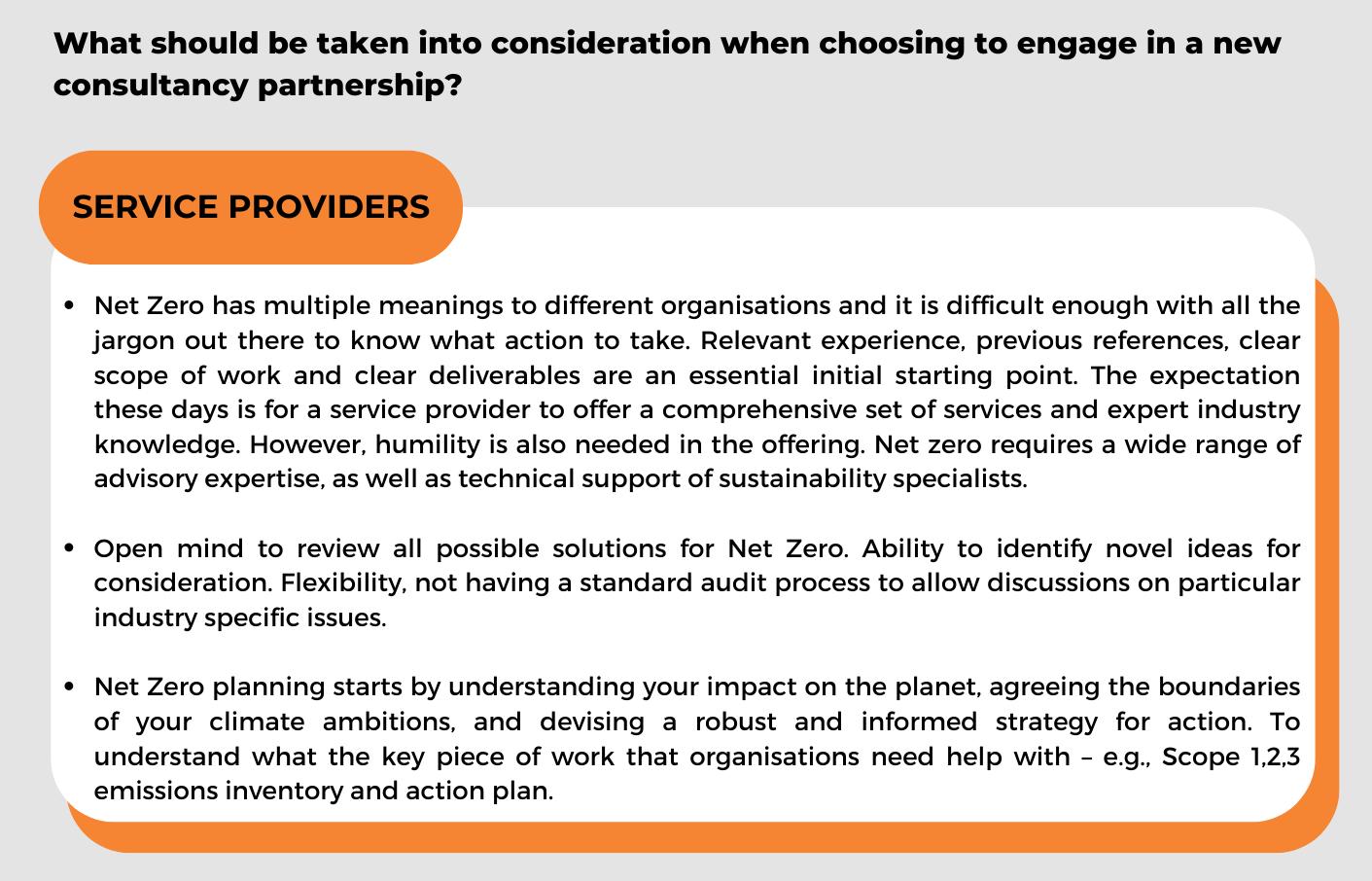
awareness about the need to improve the relationship between consultants operating in the net zero space and end users. The results were interesting and different key considerations and views from both parties should inform Energy and Sustainability professionals as they engage in consultancy partnerships to deliver on their ambitions. The focus is on what should be taken into consideration when engaging consultancy partnership; areas where forming partnerships are especially useful; and the things to look out for as the relationship develops:

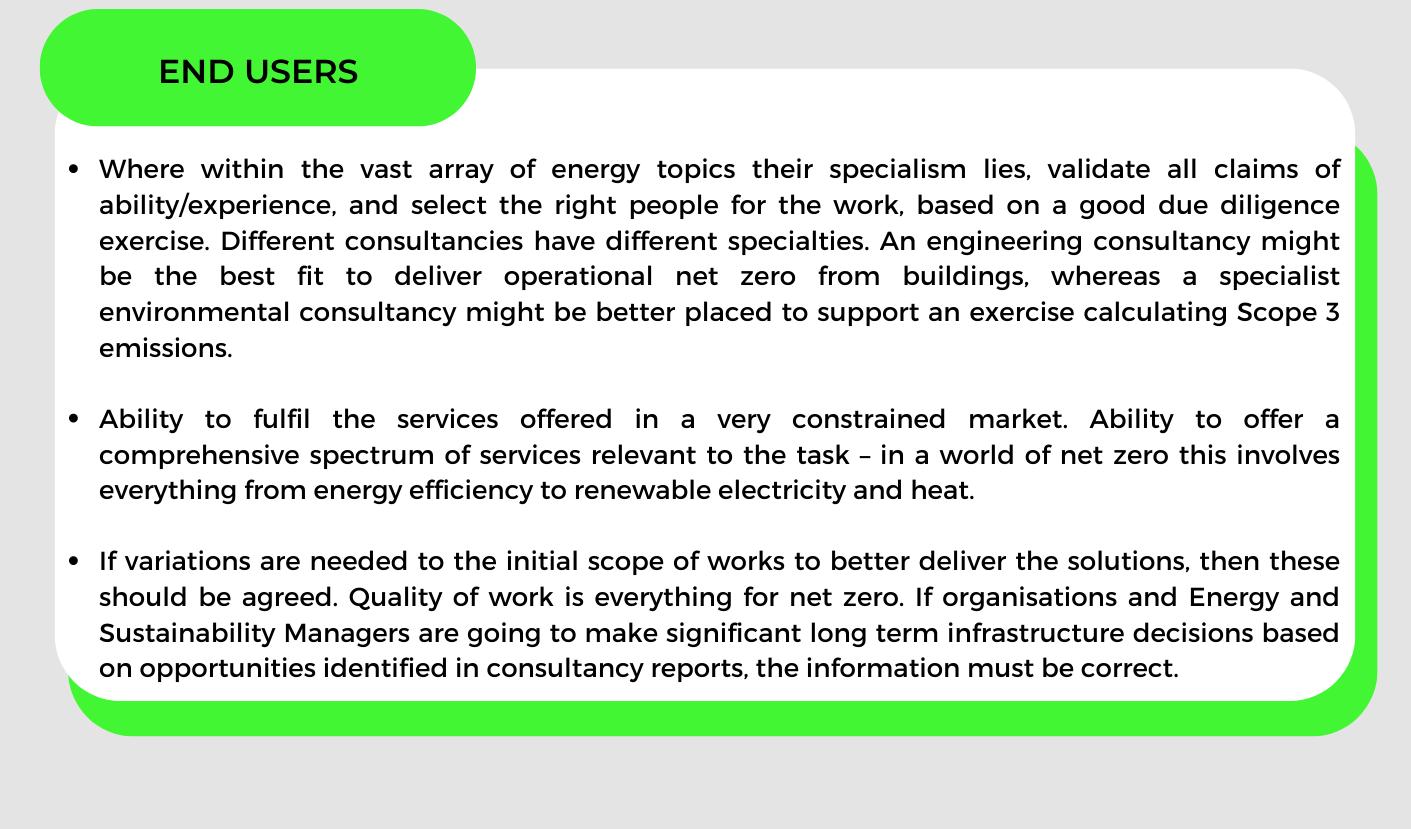
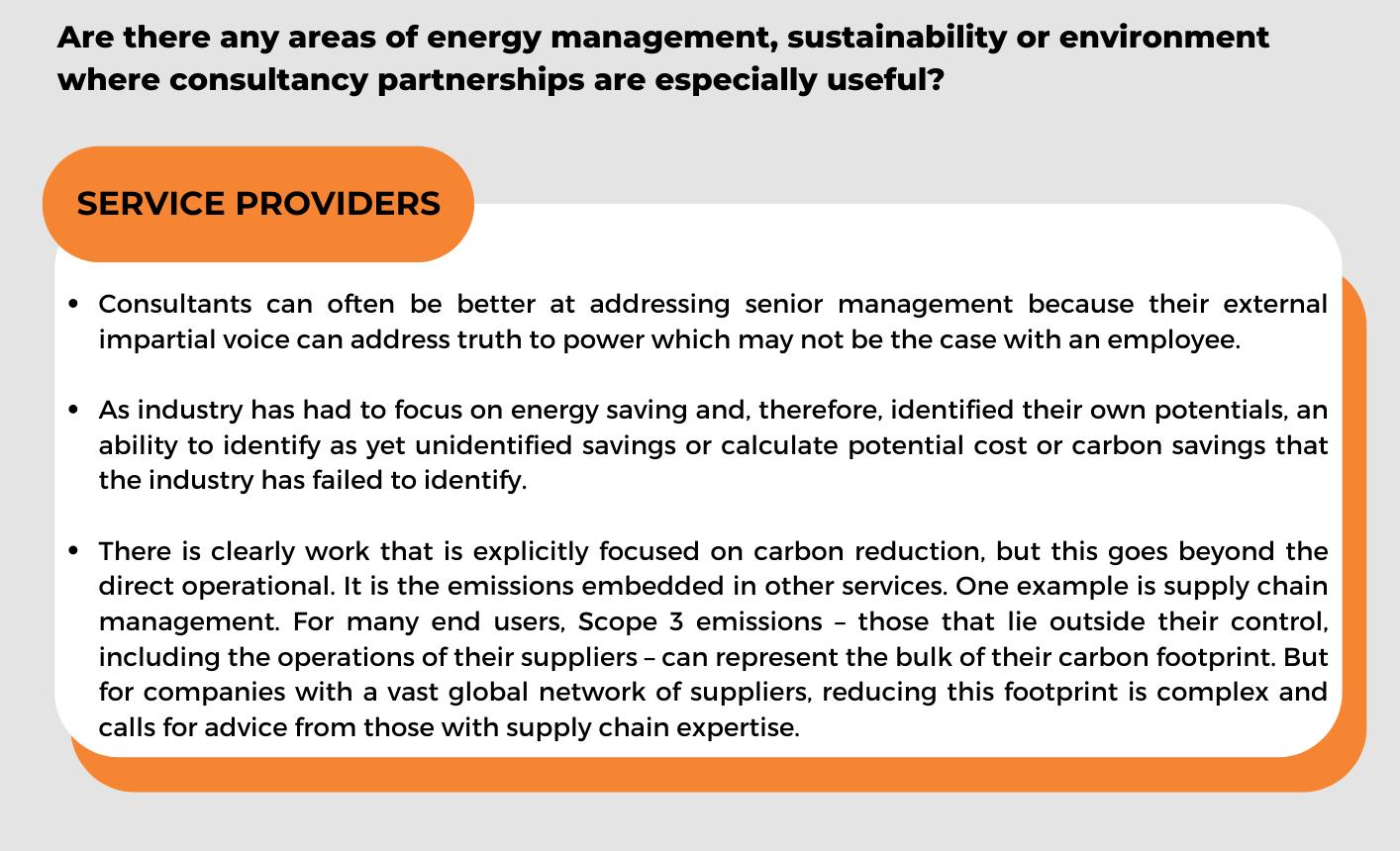

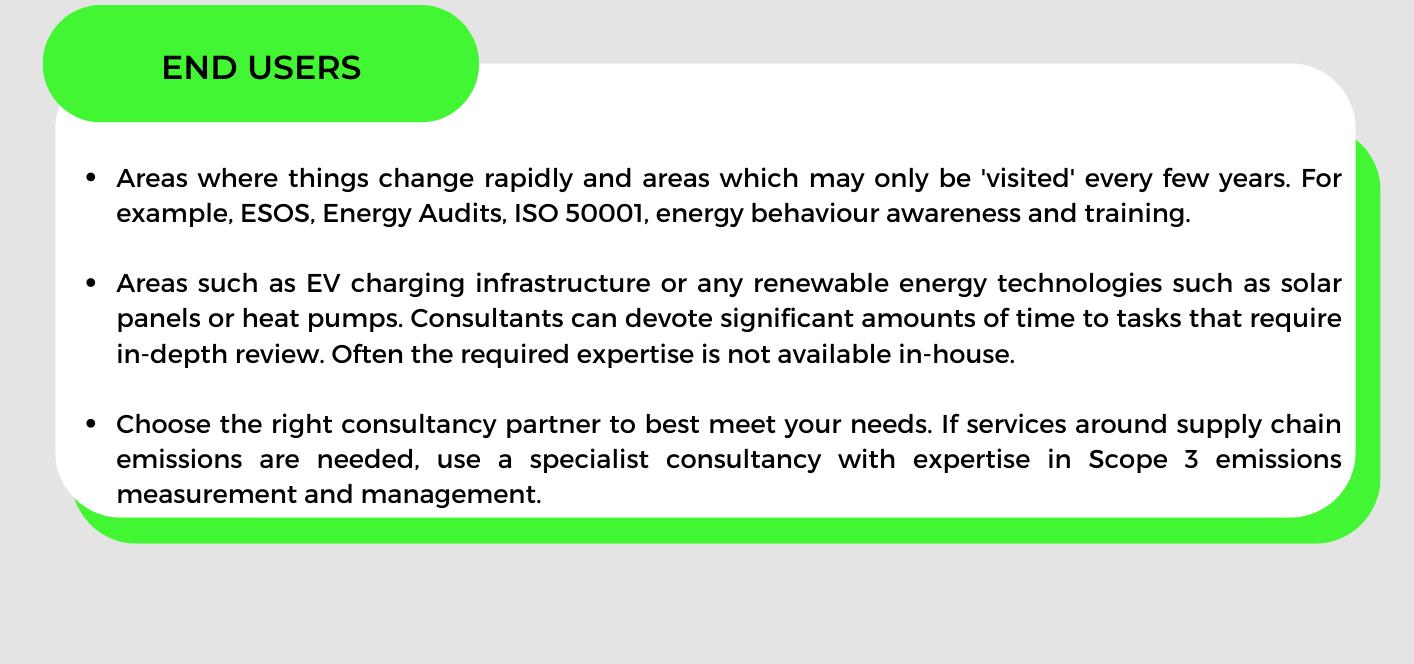

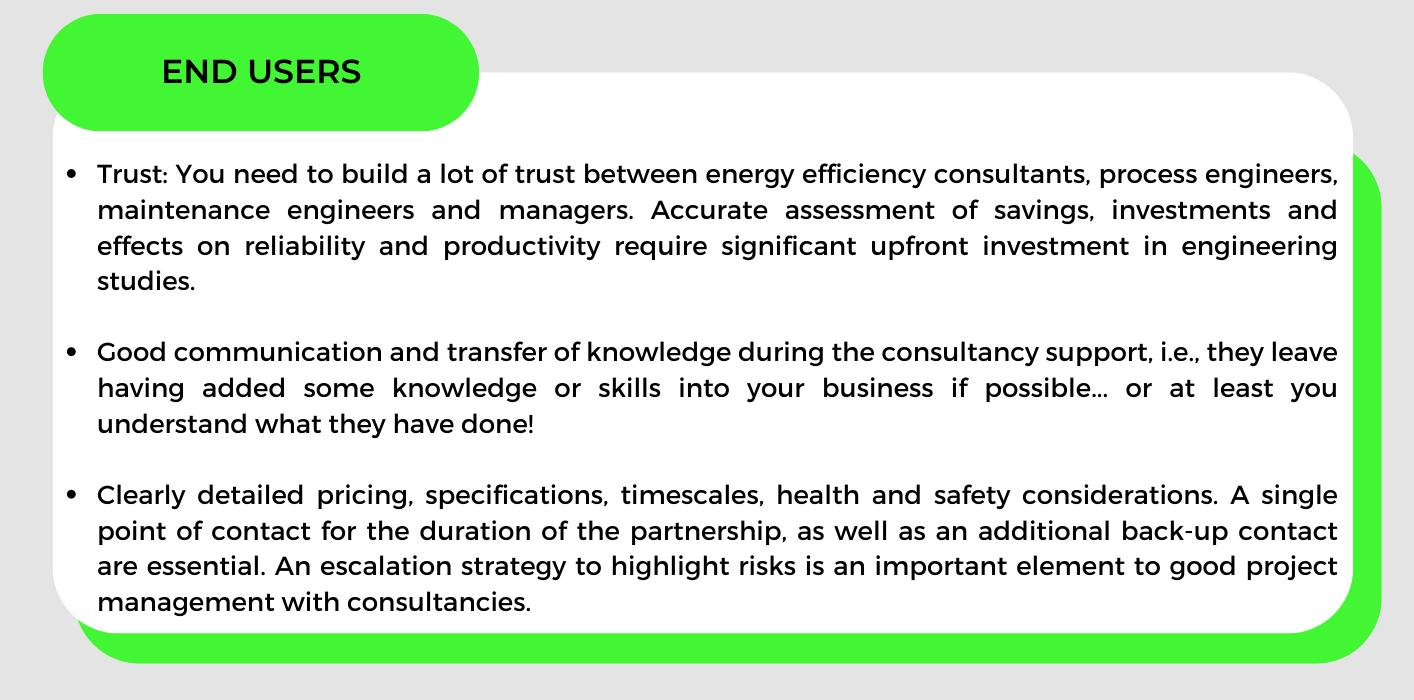



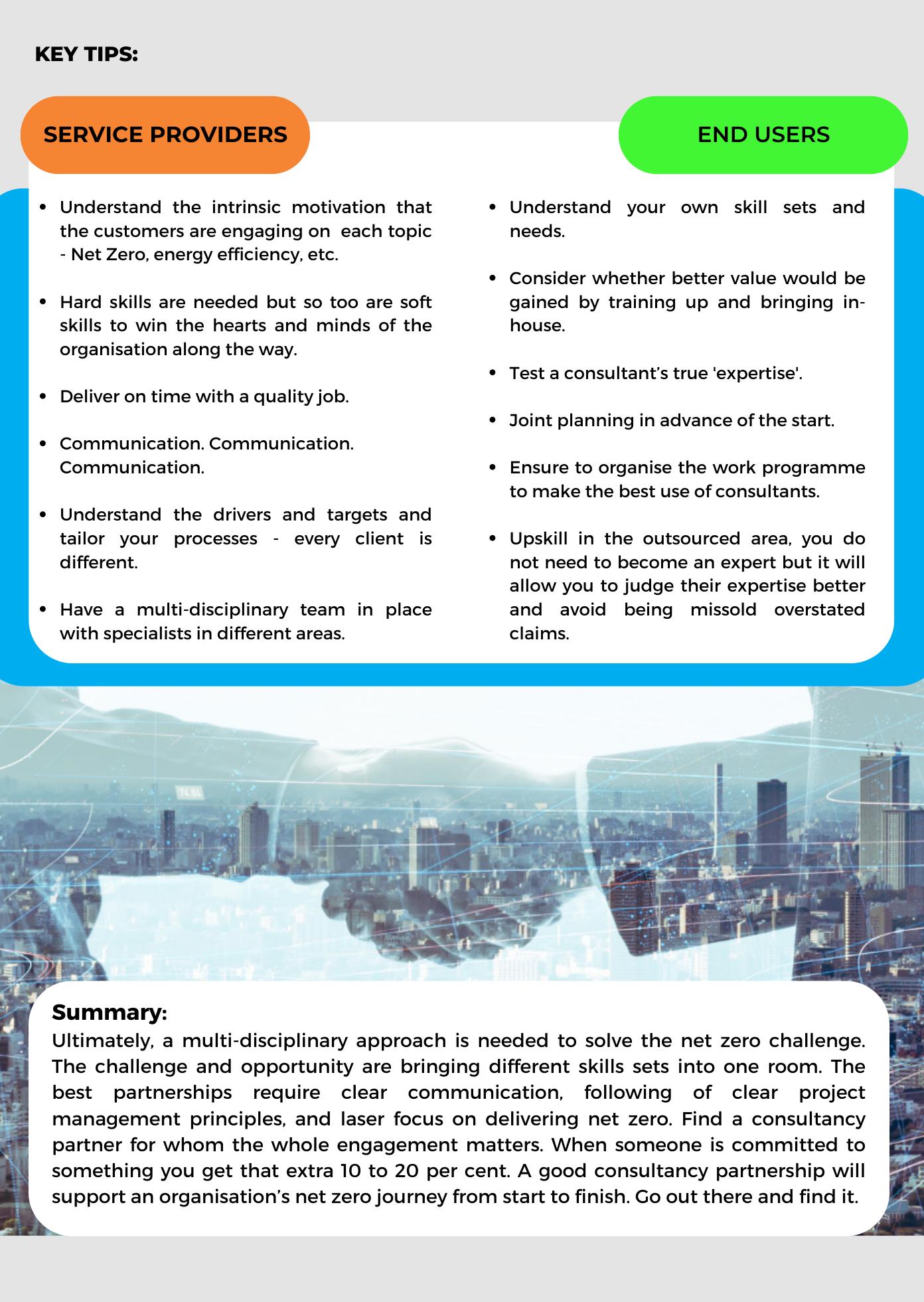

Decentralised generation and supply of electricity and heat for operation with natural gas, biogas, other lean gases, biomethane, and hydrogen.
• Increase profit
• Save on energy costs
• Boost efficiency
• Full turnkey solutions
• Power range between 20 and 4,500 kW
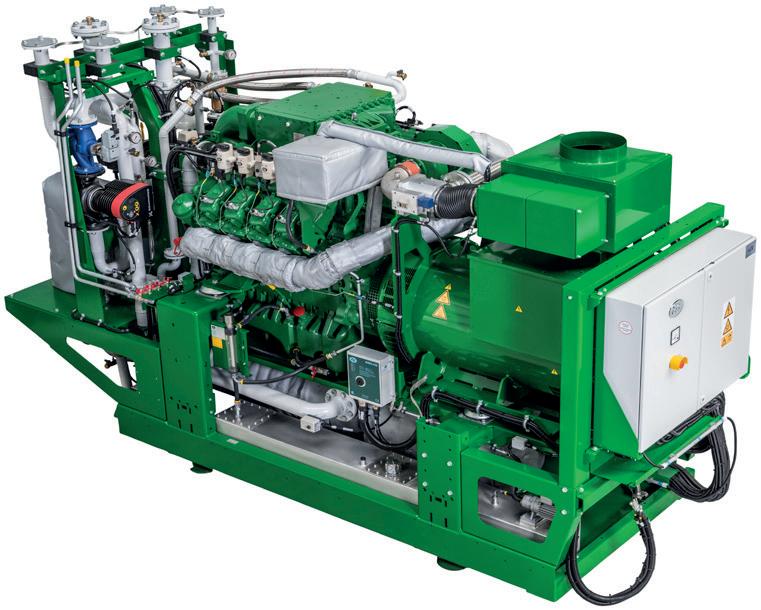
• Containerised solutions to reduce noise
• Full-service solutions

Our 2G CHP range can be retrofitted to run on 100% hydrogen whenever you are ready, setting you up for a net zero future. Natural gas today, hydrogen tomorrow.



